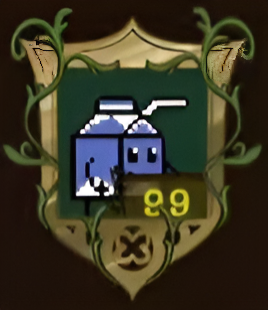I was playing around with Lemmy statistics the other day, and I decided to take the number of comments per post. Essentially a measure of engagement – the higher the number the more engaging the post is. Or in other words how many people were pissed off enough to comment, or had something they felt like sharing. The average for every single Lemmy instance was 8.208262964 comments per post.
So I modeled that with a Poisson distribution, and I learnt that to a 5% significance level, if your post got less than 4 comments, that was statistically significant. Or in other words – there is a 95% probability that something else caused it not to get more comments. Now that could be because it is an AMAZING post – it covered all the points and no one has anything left to say. Or it’s because it’s a crappy post and you should be ashamed in yourself. Similarly a “good post”, one that gets lots of comments, would be any post that gets more than 13 comments. Anything in-between 4 and 13 is just an average post.
To give you an idea of a more sweeping internet trend, the adage 1% 9% 90%, where 1% do the posting, 9% do the commenting, and 90% are lurkers – assuming each person does an average of 1 thing a day, suggests that c/p should be about 9 for all sites regardless of size.
Now what is more interesting is that comments per post varies by instance, lemmy.world for example has an engagement of 9.5 c/p and lemmy.ml has 4.8 c/p, this means that a “good post” on .ml is a post that gets 9 comments, whilst a “good post” on .world has to get 15 comments. On hexbear.net, you need 20 comments, to be a “good post”. I got the numbers for instance level comments and posts from here
This is a little bit silly, since a “good post”, by this metric, is really just a post that baits lots and lots of engagement, specifically in the form of comments – so if you are reading this you should comment, otherwise you are an awful person. No matter how meaningless the comment.
Anyway I thought that was cool.
I guess those without ego stroking don’t care.
Don’t be too mad at me
/c/theydidamath
Everybody stop commenting! Wait, did I just…dammit!
Bamboozled!
Fun break down! More comments is more interesting than more posts for me
Well then, here, have a comment.
Doing my part to make this a good post, cause it was.
I support your support.
Haha nice bait, which I took to get some actually interesting statistics, well executed !
Here is your comment, you deserve it. Now your post made it to “average”! You’re welcome.
(Was there any correlation between upvote count and the comment-based metrics? That could also be pretty interesting)
I don’t have any data for upvote count/ comment based metrics. If you have any sites that happen to have that data, send it my way, that’d be amazing!
Where can I get my 9% badge?
Sorry for the delay. Here you go:

No, you did your math wrong
Also, something about politics.
(Just kidding. This is neat 😎)
Thanks. That was the toxicity I was expecting. Even if it’s not sincere, I appreciate it. I’ve been kinda withdrawing after switching to Lemmy, and I really needed a dose of Reddit hostility.
Cool !
You didn’t factor in the variability of federation vs. a single platform and how not only can it affect how long it takes for everyone to see a post, if they do at all, but also how many duplications there may be floating around. And I don’t know if you can predict that reliably, as we’re all still trying to figure it out.
Oh, you can absolutely increase how meaningful this is. I only took college level statistics so this is very rudimentary. But yeah, I don’t know how you would predict how long something would take to be seen etc.
that could be because it is an AMAZING post – it covered all the points and no one has anything left to say
Finally, I know why.
This does happen with comments sometimes. I go into a post and someone has already eloquently said what I would have said (often better than I would have). So I upvote it and move along
this is a certified good post
We had the chance to upvote this heavily without leaving any comments, but we blew it
https://pawb.social/u/LemUrun ruined it!
post is too unfortunately
Why would you make a comment while knowing how this works. Everybody stop commenting! Don’t even do it as a meta-comment joke!
Right! Sorry.
Shhhhhhhhhhhhh!
post is too unfortunately
they don’t think it be like it is but it do
accidentally a word
I accidentally the whole thing! I miss that one.
What the hell is this?
A dying gasp collected from the old internet.
Considering the upvotes, you guys seem to have filled in just fine
In my mind, that shows that “copying reddit” was not the best idea and people should really have copied things like phpBB or SMF for the flagship “community-based” fediverse platform, at least to start out.
On traditional forums, even relatively small communities cause interesting content to appear all the time, by thread bumping and back-and-forth discussion that can go over many pages. However it is obvious that this structure doesn’t scale well to communities with thousands of active users writing thousands of comments in one thread. The reddit structure works better for such communities, but most communities we have here on the threadiverse just aren’t that big yet.
I grew up with traditional forums and discovered other structures for “social media” much later; I still consider traditional forums way superior to any “social media” structure that is nowadays popular.
“New Comments” helps with that
I was also a very active user of traditional forums but, in my experience, small subreddits (when I was on Reddit) were a decent substitute in terms of content, since posts could stay on their front page for several days. The thing I miss most isn’t the format but rather the community. The forum I posted on the most had only a few dozen regulars and I knew them.
There was the guy with a kind, insightful take on controversial issues and a fetish for women with more than two arms. The active duty marine who reliably posted harsh truths. The feminist I didn’t get along with at all despite agreeing with her about most things. The dedicated father who bought real razor wire for his daughter when she wanted a UN-peacekeeper-base themed birthday party. The very determined conservative who defended his position no matter how outnumbered he was and once bragged that he had given his wife several dozen orgasms in a row…
I suppose I was the young man with strange views about what was or wasn’t fair and a great deal of anger over any perceived unfairness. (I don’t think I was particularly well-liked.) The internet is so much less personal now.
While I love traditional forum structure, I don’t think it would be great to transition later from one structure to another completely different. In my mind, the only thing that needs a bit of tuning is the “Hot” algorithm of the front page
ActivityPub is flexible enough that we don’t have to choose. Someone could implement a piece of compatible software that displays threadiverse communities as “boards” and everyone could join whatever they liked best. NodeBB is already doing something similar to that.
Between (old) reddit, phpbb and smf… the old reddit model wins by a landslide in my opinion. I’ve used all of these over the years and absofuckinglutely HATE phpBB and SMF, with SMF earning slightly less hatred than phpBB.
I’m also old enough to have downloaded
.QWKfiles for offline BBS forum reading/replying and even connecting to the internet over a FidoNet-internet bridge. Lemmy did the exact right thing in copying reddit’s format.I think meaningful commenting only works in trees, for example the old mailing lists.
With classic linear forums, I quickly loose track of different discussions. Good luck finding replys to a comment on page #3 when the post has 300 comments.
True, that structure does also have its own peculiar problems.
It’s just what I grew up with (from when I was a preteen, only first became active on reddit ~10 years later), so I’m kinda nostalgic for it. :D One aspect of linear forums is that you gradually got to know the people regularly commenting, much more so than on reddit or Lemmy.
much more so than on reddit or Lemmy.
I still see you quite often 😄
Yes, you’re also one of the few usernames I keep seeing repeatedly.
There are definitely around 50 usernames I see in a lot of communities, or sometimes just in one. Feels nice to feel like talking to real humans compared to bots.
by thread bumping
Thread bumping is still possible on Reddit-like social media too. Just use a sort that responds to activity, like the Active sort on Mbin or Piefed.
PieFed is trying a bunch of new stuff that even Reddit does not have, enabling the democratization of moderation by putting more power into the hands of individual users (e.g. mods don’t have to be as aggressive as removing many posts with keywords when users who want such can set their own preferences via the built-in keyword filtering, which enables All, Some, and None).
Lemmy to me looks more like a straight attempt to copy, although the modlog is a great addition - unfortunately in the absence of notifications of a moderation event, lack of modmail, and presence of an obscured moderator name, Lemmy has somehow become even more authoritian than Reddit.🤷😳
Though with a MUCH more friendly userbase, and most admins, and ofc lack of profit incentive which all by its lonesome helps a ton.
The average for every single Lemmy instance was 8.208262964 comments per post.
I wonder how much that statistic would change if you exclude news or politics communities.
That’s a good point. Please take this two thirds of a comment as tribute.
The other chance that you got no comments on your post for is that you are banned from the remote instance/community, or federation is broken (still happens intermittently).
Lemmy will still allow you to post from your home instance since you are not banned there, but your content will simply get black-holed by the remote instance if you’re banned there. Sometimes you have to check the remote instance directly to see if your post was federated or not.
Is there a way to check without manually going through each instance individually?
You can just check the modlog of your local instance and search for your own username. Most of the time the ban action will federate (but again, sometimes not, never really sure why). If nothing shows up locally check the modlog of the remote instance you’re trying to post to.













